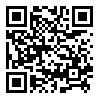BibTeX | RIS | EndNote | Medlars | ProCite | Reference Manager | RefWorks
Send citation to:
URL: http://jmp.ir/article-1-473-en.html
2- Faculty of Sciences, Ferdowsi University of Mashhad ,
Background: Since long lasting administration of anti-seizure drugs produces undesirable side effects, many efforts have been made during recent decades to find and replace the chemical drugs by medicinal plants.
Objective: The aim of present study was to study the antiepileptic (anti-seizure) effects of hydroalcoholic extract of Melissa officinalis on experimental epileptiform seizures, induced by pentylenetetrazol (PTZ) in Wistar rat.
Methods: After normalization, rats in experimental groups 1, 2 and 3 were injected (i.p) 50, 80 and 120 mg/kg hydroalcoholic extract of Melissa officinalis , respectively. Control animals were injected extract solvent as the same manner. After 30 minutes all rats were injected (i.p) 80 mg/kg PTZ and then examined for epileptiform behaviors for the next 60 minutes. The rate of mortality during the next 24 hour was also recorded.
Results: In comparison with control group, in all experimental groups the latent period of tonic-clonic generalized seizure was significantly (P<0.05) increased. Moreover, the mortality rate was decreased from 90% in control group to 30, 50 and 60% in experimental groups 1, 2 and 3, respectively.
Received: 2010/04/15 | Accepted: 2011/09/11 | Published: 2012/04/18
| Rights and permissions | |
 |
This work is licensed under a Creative Commons Attribution-NonCommercial 4.0 International License. |







